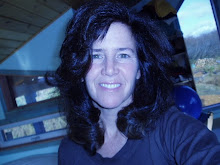
For more info on this project, please visit my blogs from the sea at the Desert Research Institute's Iceberg III web site. MANY THANKS to Dr. Alison Murray for sharing all of her photos!
The Antarctic has been a place of peace for me, its cool blue waters a respite from the churning engine of the R/V Lawrence M. Gould that sails us from Chile through the Straits of Magellen, and across the Drake Passage to Antarctica's Weddell Sea, nesting us in its swaying belly. It had been 7 years since my last voyage. At times those seven years seemed an eternity, at others a mere instant, the ice still cool and dry to the touch in my imagination.
I knew this trip would be nothing like the others. Six weeks at sea, more days in the desert than Christ spent wandering the Fertile Crescent, though he spent his journey alone and fasting. I'd not spent that much time at sea since my first post-college job, on the Tropical Oceans & Global Atmospheres (TOGA) cruise in 1990, and when I disembarked from the Xiangyianghong 14 after months at sea, I was a permanently changed person. Time at sea can be thrilling, suffocating, exhilarating, toxic, depressing, invigorating. It builds deep friendships and destroys others. One is completely alone at sea, yet always surrounded by others. You are remote as you can imagine, degrees of latitude and longitude away from terra firma, yet you are trapped.
Our project was titled "Free-drifting icebergs as proliferating dispersion sites of iron
enrichment, organic carbon production and export in
the Southern Ocean," but we knew it as "Iceberg III," the third in a series of science and engineering research cruises to explore how carbon in the sea might change when icebergs the size of small cities broke free from the Antarctic continent to wander the open blue waters outside the continental shelf. http://iceberg.dri.edu/blogs.php
It turns out that it's not so easy to find these mammoths, even with the aid of our team at Brigham Young University and the Scatterometer Climate Record Pathfinder, the remote sensing imagery system that would track our icebergs. Consider this: we were looking for a piece of ice 6-km long by 36-km wide...yet the sea is vast and constantly in motion. Wind, tidal effects, and the chance that it may crack into smaller fragments combine to give these floating worlds stealth powers of evasion.

We did finally come across our quarry, yet challenges persisted. The beauty and frustration of basic science is that you are exploring the unknown, trying to predict the natural world, to anticipate its outcome based solely on existing knowledge and the world of imagination. Due to the limited bandwidth available to us at sea, and limits on transmitting imagery, I kept my blogs to the scientific aspects of this trip, which you can read at the DRI Iceberg III Blog. You'll find lots of photos as well as introductory science and a little background on what we aimed to accomplish.














